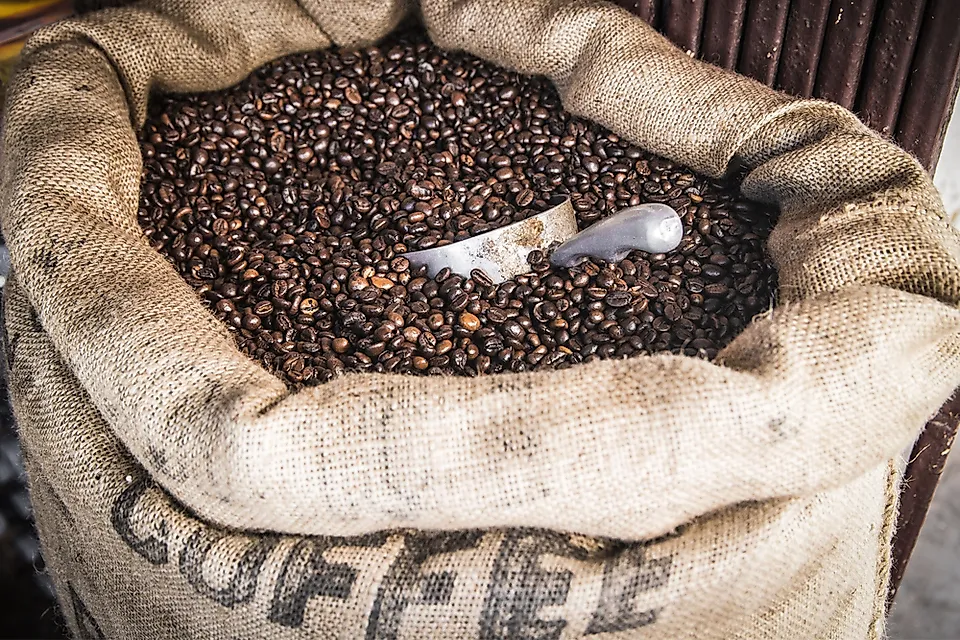Top Jute Producing Countries in the World

Jute is a long natural fiber that is produced from plants of the Corchorus genus and is made of the plant’s cellulose and lignin. The fiber has numerous uses including the manufacturing of bio-degradable packing material, such as gunny bags. Jute is recognized as the second most important vegetable fiber in the world, behind only cotton, in terms of global consumption and production. India and Bangladesh produce the greatest amounts of jute in the world, and global production is estimated at more than 3.3 million tonnes each year.
Top Jute Producing Countries in the World
India
India is the largest jute producing country in the world, with annual production estimated at more 1.968 million tonnes. The prominence of India in the global production of jute is attributed to improvements in the crop cultivation process, as well as the use of technology in jute farming. The majority of jute produced in India is consumed domestically, as the country is also one the largest consumers of jute and jute products in the world. Strict laws in India regarding allowable types of packaging materials is a primary cause of the country's demand for jute. In 2011, India imported over 337,000 tonnes of jute and jute products to meet domestic demand. West Bengal accounts for as much as 50% of the country's total jute production. Other major jute producing regions in the country include Bihar, Uttar Pradesh, Meghalaya, Assam, and Orissa.
Bangladesh
Bangladesh is the second largest producer of jute in the world, with annual production estimated at 1.349 million tonnes. The country was formerly the world’s top jute producer, but a lack of technological advancements in Bangladesh’s jute cultivation means that production was stagnant, as was later surpassed by India as the global leader in jute production. Nonetheless, Bangladesh remains the world’s largest exporter of jute fiber, accounting for as much as 70% of global jute exports. The jute fiber produced in Bangladesh is often considered the best quality in the world.
Jute has been produced in Bangladesh for domestic consumption for many centuries, but it was not until the establishment of the British East India Company that the crop became a key export commodity. Key jute producing regions in Bangladesh include Tangail, Dhaka, Jessore, Jamalpur, Bogra, and Faridpur. The total area under jute cultivation in Bangladesh is about 559,838 hectares. The Bangladeshi Jute Research Institute is a state-owned institute which provides top-quality seeds to jute farmers across the country.
Other Top Jute Producing Countries
There are few other countries which have significant levels of jute production. These countries include China, whose annual jute production is estimated to be about 29,628 tonness. China is also one of the world’s largest consumers and importers of the natural fiber. Other jute producers include Uzbekistan (20,000 tonnes), Nepal (14,890 tonnes), and South Sudan (3,300 tonnes).
Uses of Jute
Jute is one of the most common natural fibers in the world and is renowned for its antistatic and insulation properties, as well as its low thermal conductivity. Jute also has low extensibility and high tensile strength, which make jute-made packaging materials breathable and hence suitable for the packaging of agricultural commodities. Numerous countries around the world have imposed bans on plastic packaging, making jute a popular alternative due to its bio-degradable nature.
Top Jute Producing Countries in the World
| Rank | Country | Annual Jute Production (Tonnes) |
|---|---|---|
| 1 | India | 1,968,000 |
| 2 | Bangladesh | 1,349,000 |
| 3 | People's Republic of China | 29,628 |
| 4 | Uzbekistan | 20,000 |
| 5 | Nepal | 14,890 |
| 6 | South Sudan | 3,300 |
| 7 | Zimbabwe | 2,519 |
| 8 | Egypt | 2,508 |
| 9 | Brazil | 1,172 |
| 10 | Vietnam | 970 |











